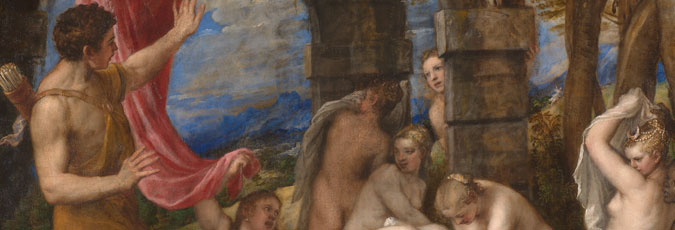Commission for Philip II
Titian had a reputation for taking the genre of large-scale mythological painting to new heights. He had made a dazzling series of paintings for Alfonso d’Este, Duke of Ferrara, which included the vibrant Bacchus and Ariadne.
Titian first met Philip in around 1548, some eight years before he took the throne. The meeting prompted him to start another ambitious set of paintings. Writing to Philip during their creation, Titian named these compositions ‘poesie’ - the visual equivalents of poetry.
Poesie for Philip II
‘Diana and Actaeon’ is part of a series of six large-format mythologies inspired by the Roman poet Ovid. The first pair of poesie, ‘Danaë’ and ‘Venus and Adonis’, were variations of pictures that Titian had painted before. A studio version of 'Venus and Adonis' is in the National Gallery. In 1556, the year Philip was crowned king of Spain, Titian sent him ‘Perseus and Andromeda’ which was later joined by ‘The Rape of Europa’.
Titian raised his game for two further paintings. It took the artist three years to complete ‘Diana and Callisto’ and ‘Diana and Actaeon’. In an unapologetic letter to Philip, he explained that the delay was due to ‘the ardent desire that I have to do things that are worthy of Your Majesty’.
It seems that it was worth the wait. These were works of unprecedented beauty and inventiveness, richer in chromatic range and compositional complexity than all their predecessors.

